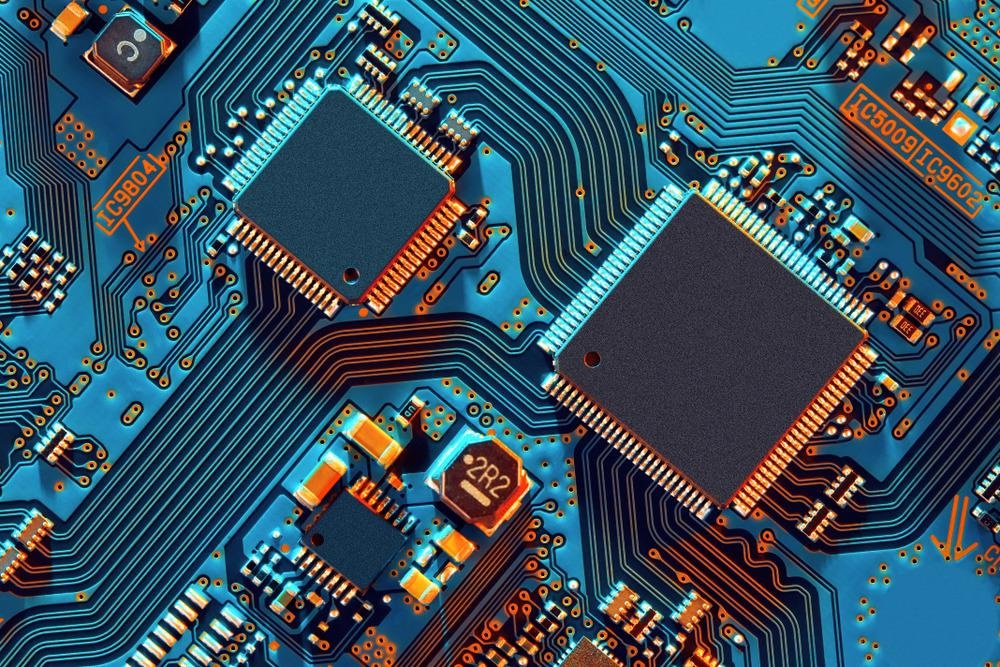The idea of low-energy electronics is designing electrical components with minimal resistance that reduce their overall energy use. It is estimated that, worldwide, over 20 billion kWh of electricity is used every year. An average UK household uses only 3731 kWh over the same period.2 However, a significant portion of that electricity usage could be reduced if all devices and infrastructure were switched to low-energy electronics.

Image Credit: raigvi/Shutterstock.co
When a current passes through an object such as a wire, the movement of the electrons is hindered by ‘friction’ caused by phenomena and forces that oppose their movement. This means that, unless a wire has zero resistance and the current can flow completely unimpeded, heat is generated as the current flows. This thermal load can cause issues for device function, such as preventing packing more transistors onto chips but also results in higher energy demands for the electronic device to compensate for these thermal losses.
Floquet States
Given the obvious advantages of reducing energy consumption and minimizing thermal loads, the question is how to create low-energy electronics. Reducing the resistance of the wire would be one possibility but achieving zero levels of resistance means creating superconducting materials. For creating usable devices, the superconducting properties of the material would need to remain at room temperature, and while significant progress has been made on finding more materials that can operate at close to room temperature conditions, there are still many challenges to be overcome.3
An alternative approach is to look at specific states that can be created in particular types of materials, such as Floquet-Bloch states. A Floquet-Bloch state is formed when electrons do not absorb the light, but instead react to its oscillating field. While the external field is present, the oscillations of the electrons in the material are perturbed.
This perturbation affects the electronic energy levels of the material and in turn its behavior with respect to electrical currents. Some of the interest in these Floquet-Bloch states can change the behavior of the material from being an insulator into a Floquet topological insulator. The controllability of this with using light irradiation means this could form the basis of the low-energy electronic transistor.
Ultrashort Pulses
One of the theories in Floquet-Engineering was that these hybrid light-matter states were thought to only be created by continuous sinusoidal waves. This meant using continuous-wave irradiation to create and control them in the material. This has meant that previous work on Floquet-Bloch states has largely focused on creating them with continuous-wave irradiation with light and it was thought their properties would vary depending on whether the light source was a continuous wave or pulse source.
However, recent research looking at atomically thin layers of a material called tungsten disulfide (WS2) suggests that irradiation with ultrashort laser pulses may be indistinguishable from continuous-wave irradiation in terms of the creation of these Floquet-Bloch states.4
The team at Swinburne University of Technology used pulses of just 84 femtoseconds, which is around 15 optical cycles, to look at the formation and behavior of Floquet-Bloch states in the transition metal dichalcogenide, WS2. What they observed by monitoring the free-induction decay in this material – the change in its electronic response as a function of time after irradiation with the pulse of laser light – was that the behavior of the Floquet-Bloch states was that the finite duration of the laser pulses did not produce any shifts in the states that would have differed from continual irradiation.
Another feature of Floquet-Bloch states is their dependence on the intensity of the driving field. The team was able to demonstrate that there was a direct relationship between the ultrafast laser pulse intensity and the induced energy shift. In terms of engineering, what this meant is the team could not just control the formation and destruction of these states by switching the laser off and on, but also tune the properties of the material precisely by controlling the laser power.
As the presence of the Floquet-Bloch states affects the bandgap of the WS2, the team is hoping to exploit this for low-energy electronic transistors. The bandgap of semiconductors is an important property as its value determines what type of applications a semiconductor can be used for. For photovoltaics, it determines where the solar cell would absorb, and for light-emitting diodes, it changes the color at which they emit light.
The Future of Floquet Engineering
The potential to control band gaps for a single material in a predictable and straightforward way will be a powerful tool for Floquet engineering and open new possibilities for the light-based control and engineering of new types of electronic devices with ultrafast switching capabilities in the transistors – essential for digital information transfer.
References and Further Reading
- Statisa (2021) Net Consumption of Electricity, https://www.statista.com/statistics/280704/world-power-consumption/, accessed October 2021
- OVO (2021) Average Household Electricity Use, https://www.ovoenergy.com/guides/energy-guides/how-much-electricity-does-a-home-use, accessed October 2021
- Mourachkine, A. (2004). Room-temperature superconductivity. Cambridge Int Science Publishing. https://arxiv.org/ftp/cond-mat/papers/0606/0606187.pdf
- Earl, S. K., Conway, M. A., Muir, J. B., Wurdack, M., Ostrovskaya, E. A., Tollerud, J. O., & Davis, J. A. (2021). Coherent dynamics of Floquet-Bloch states in monolayer W S2 reveals fast adiabatic switching. Physical Review B, 104(6), 1–7. https://doi.org/10.1103/PhysRevB.104.L060303
Disclaimer: The views expressed here are those of the author expressed in their private capacity and do not necessarily represent the views of AZoM.com Limited T/A AZoNetwork the owner and operator of this website. This disclaimer forms part of the Terms and conditions of use of this website.